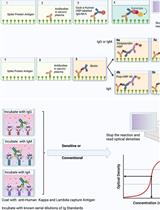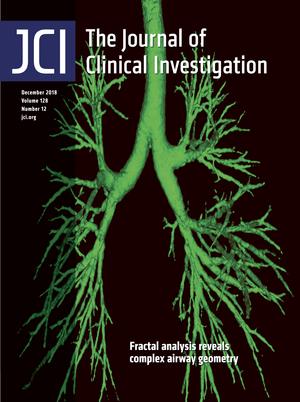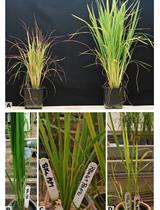- EN - English
- CN - 中文
A Highly Sensitive, Reproducible Assay for Determining 4-hydroxynonenal Protein Adducts in Biological Material
生物材料中4-羟基壬烯醛与蛋白质加合物的高灵敏、可重复检测法
发布: 2019年10月05日第9卷第19期 DOI: 10.21769/BioProtoc.3383 浏览次数: 3707
评审: Anonymous reviewer(s)

相关实验方案

用于检测和定量人血浆或血清中抗病毒抗体的优化间接 ELISA 方案:以 SARS-CoV-2 为例的案例研究
Claire Baine [...] Jennifer Serwanga
2023年12月20日 3185 阅读
Abstract
Oxidative stress is associated with numerous diseases, and markers of oxidative stress in biological material are becoming a mainstay of both experimental and clinical/epidemiological research. Lipid peroxidation is a major form of oxidative stress, but due to their rapid degradation and instability, lipid peroxides are notoriously difficult to measure, particularly in biological specimens where their production and removal are continuously occuring. Thus, a commonly used surrogate marker of lipid peroxidation is protein adducts of 4-Hydroxynonenal (HNE), an α, β-unsaturated hydroxyalkenal (i.e., a reactive aldehyde) formed via degradation of oxidized polyunsaturated fatty acids (PUFAs). HNE adducts can be measured via commercially-available immunosorbent assays, but these have their limitations due to excessive costs, and reproducibility among laboratories is challenging due to variability in assay sensitivity, procedure, and reagents. Here we present a reproducible, facile, and economically conservative protocol for quantifying HNE protein adducts. The key to this protocol is to generate HNE-adduct standards by incubating bovine serum albumin (BSA) with HNE. These standards are then adsorbed to immunsorbent plastic in a multi-well plate format alongside biological samples. An enzyme-linked immunosorbent assay (ELISA) is then performed on the multi-well plate using commercially-available primary and secondary antibodies, and a peroxide-based fluorescent developing reagent. This protocol is highly sensitive and offers advantages to commercial sources in that it allows for reproducible, high-throughput quantitation of HNE adducts in a large number of samples.
Keywords: Oxidative stress (氧化应激)Background
When polyunsaturated fatty acids (PUFAs) become oxidized in cell membranes, there are only two possible outcomes: 1) resulting lipid peroxides (LOOHs) are neutralized via enzyme-dependent (e.g., glutathione peroxidase-4, GPx4) and/or spontaneous reaction with redox-active molecules (e.g., quinones); or 2) the LOOHs degrade into highly reactive aldehydes, capable of forming adducts with proteins, DNA and other lipids. One of the more common aldehydes formed is 4-hydroxynonenal (HNE), an α, β-unsaturated aldehyde formed from peroxidation of n-6 PUFAs such as arachidonic acid and linoleic acid, both of which are abundant in phospholipid cell membranes. Accumulation of HNE and other related biogenic aldehydes, such as malondialdehyde, react with nucleophilic side chains in proteins and polypeptides to form stable protein adducts that can sometimes act as ‘toxic second messengers’ of oxidative stress. These reactions constitute a form of oxidative stress referred to as carbonyl stress. Hydroxynonenal can noncompetitively inhibit the activity of antioxidant enzymes like aldehyde dehydrogenase (ALDH2) and aldo-ketoreductase (AKR), further exacerbating accumulation and cytotoxicity of reactive carbonyl species (Jinsmaa, et al., 2009). Since LOOHs are notoriously difficult to directly measure in vivo, HNE-adducts serve as a surrogate biomarker of LOOHs, and the corresponding carbonyl stress imposed by them in cells and tissues have been reported in both experimental models and clinical studies of degenerative and age-related pathologies including Parkinson’s Disease, obesity and diabetes, cardiovascular diseases, and many cancers (Markesbery and Lovell, 1998; Orioli et al.; 1998; Selley, 1998; Traverso et al., 1998; Frohnert et al., 2011; Anderson et al., 2014; Katunga et al., 2015a; Anderson et al., 2018). Hydroxynonenal tends to react with nucleophilic moieties, such as the side-chains of cysteine, lysine, and histidine, either the carbonyl group, forming a Schiff base, or the β-carbon, forming a Michael addition adduct.
A variety of assays for HNE-adduct detection are commercially available. Most of them employ an ELISA method, using a proprietary combination of antigen-capture or ‘sandwich-ELISA’ formulation. These assays can vary widely in sensitivity, leading to problems with reproducibility and data compatibility across laboratories. Here we present a facile, economically conservative and reproducible assay for determining HNE-adduct levels in serum, cell-, and tissue-lysates.
Materials and Reagents
- Paper towel
- 96-Well Plate (Clear Flat-Bottom, MaxiSorp, Thermo Fischer Scientific, catalog number: 442404)
- 4-hydroxynonenal (Caymen Chemical, catalog number: 32100)
- Bovine Serum Albumin solution, sterile (Sigma-Aldrich, catalog number: A9576)
- Immuno Shot-Platinum (Cosmo Bio, catalog number: CSR-IS-P-500)
- Anti-HNE antibody (Percipio Biosciences, catalog number: 24327)
- Goat Anti-Mouse HRP conjugated antibody (Santa Cruz Bio Technology, catalog number: 170-5047)
- Amplex UtraRed Reagent (Thermo Fischer Scientific, catalog number: A36006)
- Sodium Phosphate Buffer (50 mM, pH 7.4)
- NaCl (Sigma-Aldrich, catalog number: S9888)
- KCl (Sigma-Aldrich, catalog number: P3911)
- Na2HPO4·2H2O (Sigma-Aldrich, catalog number: 71643)
- KH2PO4 (Sigma-Aldrich, catalog number: 795488)
- Tween 20 (Sigma-Aldrich, catalog number: P1379)
- RIPA Buffer (Thermo Fischer, catalog number: 89901)
- Tris Base (Roche, catalog number: TRIS-RO)
- EDTA (Sigma-Aldrich, catalog number: EDS)
- EGTA (Sigma-Aldrich, catalog number: E3889)
- Triton X-100 (Sigma-Aldrich, catalog number: X100)
- H2O2
- 1x Phosphate Buffered Saline (PBS, see Recipes)
- 1x ELISA Wash Buffer (see Recipes)
- 1x Amplex UltraRed Solution (see Recipes)
- 1x TEE-T Buffer (see Recipes)
Equipment
- Incu-Mixer (Benchtop Scientific, model: MP4)
- Standard Lab Rocker (any brand)
- Fluorescent multi-well plate reader
- Duall Tissue Grinder (Kimble, model: 3432N07)
Procedure
文章信息
版权信息
© 2019 The Authors; exclusive licensee Bio-protocol LLC.
如何引用
Monroe, T. B. and Anderson, E. J. (2019). A Highly Sensitive, Reproducible Assay for Determining 4-hydroxynonenal Protein Adducts in Biological Material. Bio-protocol 9(19): e3383. DOI: 10.21769/BioProtoc.3383.
分类
生物化学 > 蛋白质 > 翻译后修饰
生物化学 > 蛋白质 > 免疫检测 > 酶联免疫吸附试验(ELISA)
您对这篇实验方法有问题吗?
在此处发布您的问题,我们将邀请本文作者来回答。同时,我们会将您的问题发布到Bio-protocol Exchange,以便寻求社区成员的帮助。
提问指南
+ 问题描述
写下详细的问题描述,包括所有有助于他人回答您问题的信息(例如实验过程、条件和相关图像等)。
Share
Bluesky
X
Copy link









